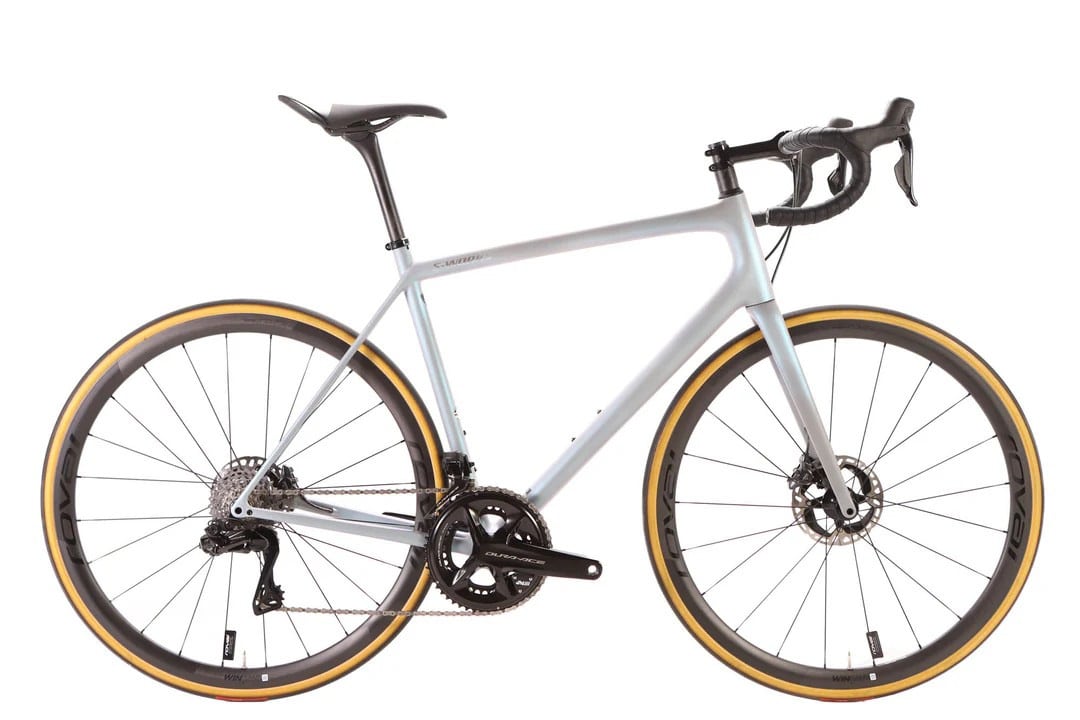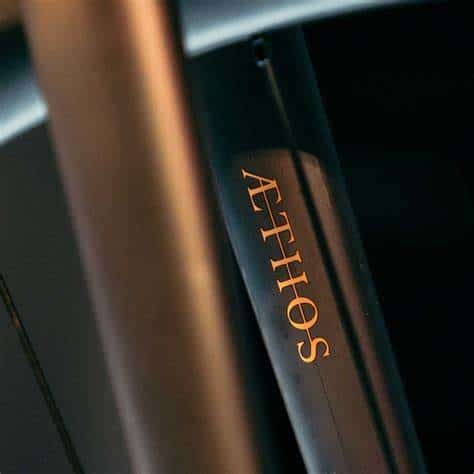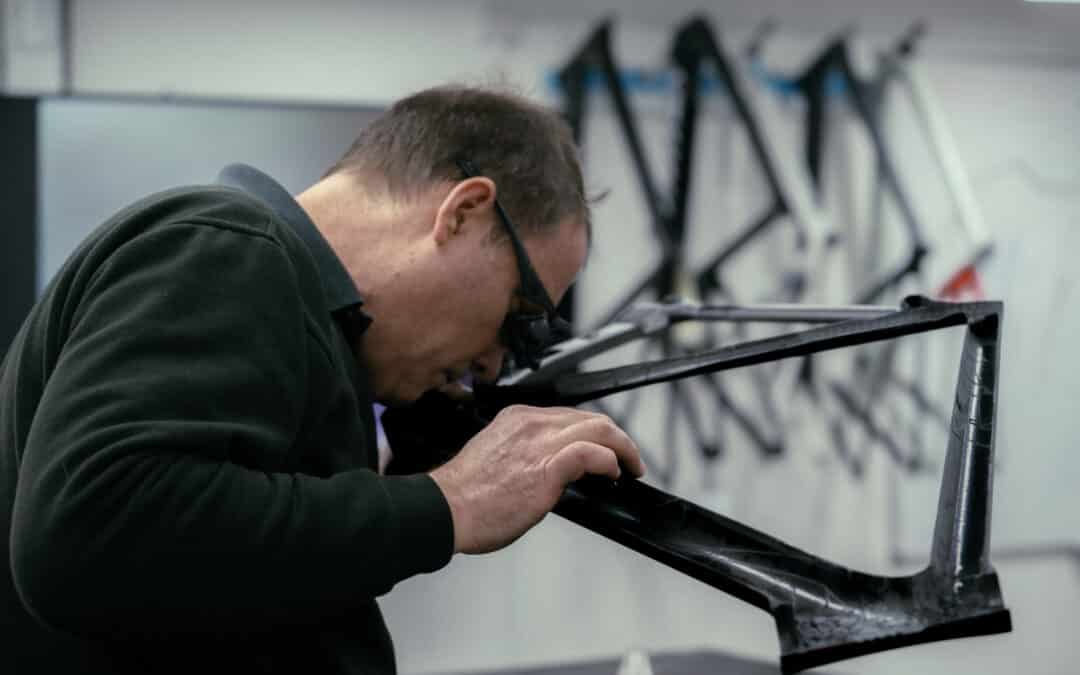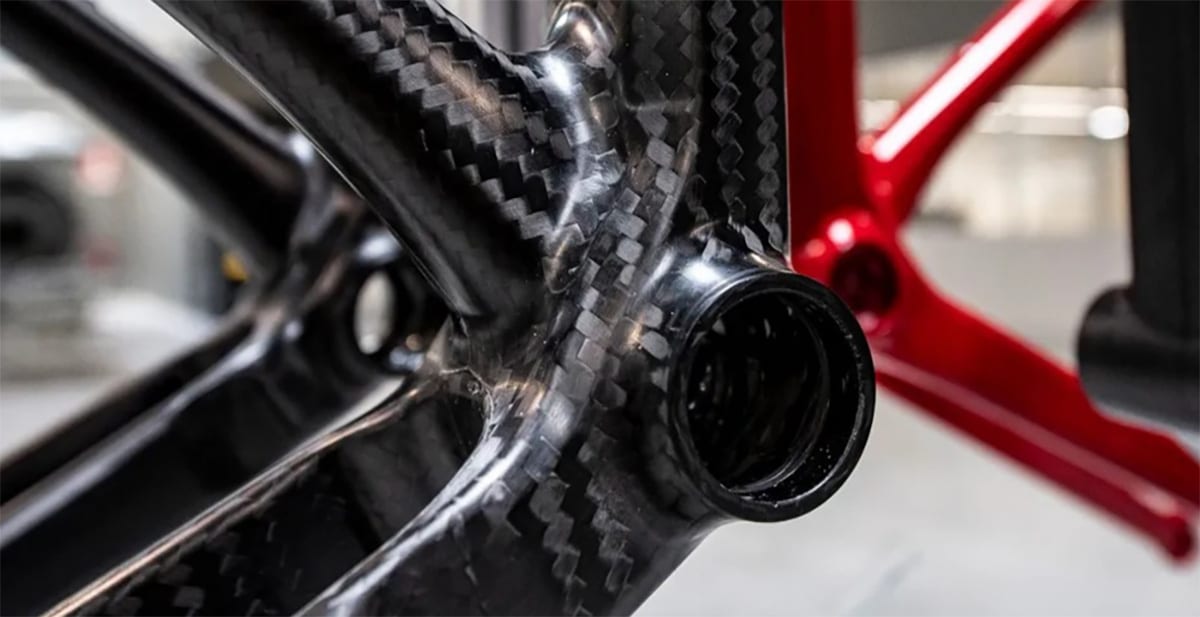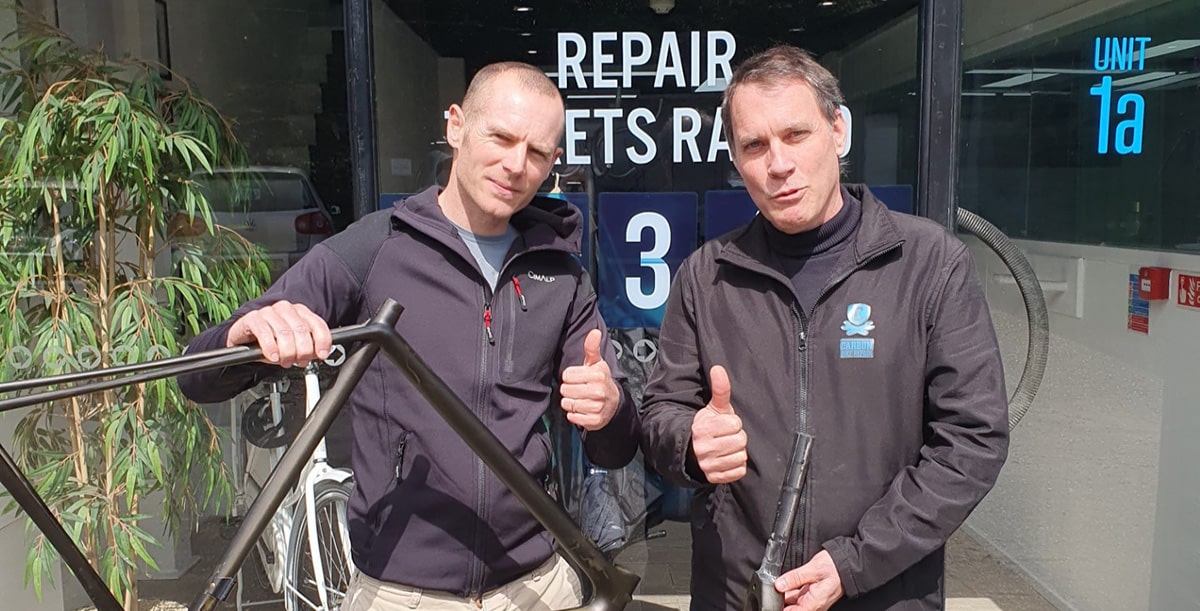Ultra-light frames have some wall thicknesses of around 0.4 mm
The views expressed here are mine alone. They do not reflect bikes in development or the general consensus in the cycling community but it is high time someone who repairs them for a living should speak up !
So let’s now look then at the job a carbon bike actually has to do:
Terrain – Are ultra-lights frames really gaining the overall advantage?
The 3 main elevations are flat, down and up right? I would argue the point that for the most part a heavier bike would be more suitable for 2 of the 3 elevations. Head winds and downhill control are better suited by heavier frames. Yes of course an ultra-light frame is a key component of climbing but really only at pro level I am afraid. Modern carbon bikes with frames sets weighing 1kg or more with a good group set and suitable ratios and geometry are more than capable over all terrain.
Road surface – Ultra-light frames are affected far more by our very poor quality roads. Fatigue through vibration, and structural failure from close encounters with potholes affect ultra-light frames more easily than is the case with heavier frames.
Elements – Rider weight unless you are an under nourished pro can vary greatly overtime yet ultra-light frames are designed only to handle specific weight limits, flex tolerances / distribution and, impact through the wheels. At any one moment at least the first 2 of these elements are in play constantly, add anymore and you go into, what I call, the ‘red zone’.

The ‘red-zone’ is where designers have not purposely build in sufficient redundancy guarantees, and where a trade-off between the ultra-light weight advantages and the above variables co-exist ! You can only hope the designers of your particular frame have been generous in the red zone. A general rule of thumb – the lighter the frame the smaller the ‘red-zone’.
Turbo trainers! For ultra-light frames it is critical what type you use. The purpose of ultra-lite frames is to be stiff and light. These frame sets are not designed to flex at 1 mount point, well no carbon bike really is but more so on ultra-lights. You are better off on rollers or where the trainer unit can flex rather than the frame. We have received enough frame sets to realise that there is a link.
Brand competence
When it comes to light weight bikes there are some brands who are not qualified to produce these bikes. A general trend we see is smaller brands copying the bigger brands but without the data. My advice is ONLY consider major brands for ultra-lights, TT or sprint bikes. They have the most impressive facilities to entertain such ideas but even they are not immune from the marketing pressures which afflict most brands. The good news is that more moderate carbon bikes and even the many Chinese brands selling in the west now are generally very good value indeed! Watch Jourdain Coleman’s YouTube channel on this
So why are we seeing this seemingly irresponsible behaviour by the brands?
If we break it down, one of the key factors is compliance with the UCI regulations for their pro team sponsored bikes which, for those who are not aware, require only retail available components to be used. Having this level of endorsement opportunity shows brand competence participation, none of which serve the amateur cyclist in my opinion. There should be a UCI pro- race bike category which is totally separate from commercial high end bikes. There should be a clear mandate to qualify in order to attain one. This would keep competition in the pro and amateur events fair but most importantly would stop the un-informed from being able to acquire such specific frame sets. In other words ‘fit for purpose’.
The big concern should be when these ultra-light bikes are sold on. Who is qualified to inspect these frames, what controls and guidelines are retained to ensure the cyclist is fully informed of the weight limits set for the bike? Our unregulated cycling market place is a far cry from the pro team structure. The pro-team rider has a support structure to ensure diet, good training and a technical team to realise the full potential of the bike, then discarded when appropriate.
I think we are playing with fire if we continue to go lighter. Ancillary component choice and setup is more fundamental to ensure you are actually getting the most out of your frameset without risking your safety. It is crazy to think that the trend is to buy the lightest frameset you can afford with heavy disk brakes and 2 water bottles. Always the frame first.

How do we know all this?
Carbon Bike Repair have been leading the carbon repair and restoration industry for 12 years we have completed over 16,000 repairs, we have a lot to offer from all this experience. CBR has been recognised at brand level to advise on prototypes and assist with suggested structural modifications on some existing models.
Ultra-light frames have some wall thicknesses of around 0.4 mm, so we have purposely invested and pioneered the use of robotic repairs giving us an accuracy tolerance of 0.02 mm affording us the very best results for the repairing of ultra-light frames.
I have been wanting to write this article for some weeks now because of some alarming findings during an experimental project to remove weight from an average weight, mainstream brand frame; let me explain:
The robot was instructed to remove only 0.1mm of material from the top and down tubes as a test. There simply was no other safe or large enough location to make a difference. The robot completed the top tube and the firmness was still the same however not so for the downtube. At 0.1mm the robot opened about 4 holes at the base of the downtube running along the seam line toward the bottom bracket causing us confusion. We initially assumed the robot had made an error but when we rechecked the data we noted that this area was less than 0.1mm thick in places and yet this frame had been successfully ridden in National Competition.
So how was this possible without it failing?
The rider was very light, with good technique in managing high watt output, yet clearly the frame was able to cope with this very obvious but specific use.
You get where I am going with this?
You may argue that this model posed no problems but I would ask you how do you feel about your ultra-light frame being clamped or fitted to a roof rack, transported in a flight case or hitting a pot hole or crashing in a race. How long will it last?
But more importantly ask yourself if you really need a 200g saving from the frame would it not be better to use lighter components or indeed to lose the weight from yourself !
If you would like to hear my comments on carbon wheels please drop me a line at info@carbonbikerepair.co.uk


